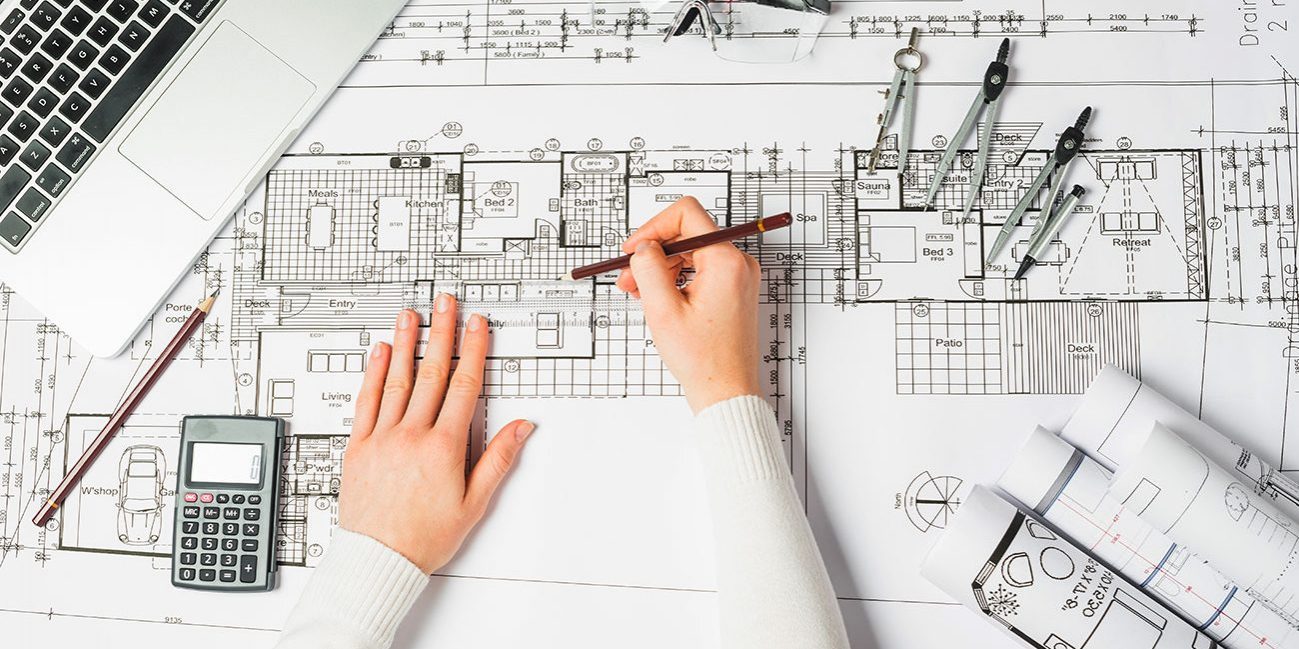Understanding the Diverse Career Paths Available for Aspiring Architect
As a hopeful Architect, you have a globe of career paths waiting for you. Each course supplies special obstacles and possibilities to use your creativity and technical knowledge. Whether you're drawn to typical design or the subtleties of lasting style, there's a specific niche that aligns with your passions. Comprehending these varied alternatives can shape your specialist journey, yet which instructions will you select to explore first?
Conventional Architecture: Designing Structures and Frameworks
Conventional architecture focuses on making structures and structures that blend capability with aesthetic appeal. Your layouts can show social heritage, showcasing neighborhood traditions while satisfying modern demands.
You'll establish skills in drafting, model-making, and site evaluation, allowing you to envision and connect your concepts properly. Involving with customers, you'll need to comprehend their vision and translate it into feasible layouts.
Moreover, building codes and sustainability practices are necessary in your job, guaranteeing your structures are ecologically pleasant and safe. As you expand in your profession, you'll find opportunities in domestic, commercial, or even restoration tasks, each offering distinct challenges. Accepting conventional architecture leads the way for a satisfying profession that admires the past while forming the future.
Urban Planning: Shaping Communities and Public Spaces
As a hopeful Architect, you can play a crucial duty as a city organizer, transforming just how areas connect and operate. By employing area involvement approaches, you'll assure that locals have a voice in forming their atmosphere. Plus, integrating sustainable design principles will certainly aid develop rooms that not just fulfill today's requirements however also safeguard the future.
Duty of Urban Planners
While several may consider engineers as the sole enthusiasts behind structures, city organizers play a crucial duty in shaping the wider landscape of neighborhoods and public spaces. They assess land use, zoning legislations, and community requires to develop sustainable environments that improve high quality of life. By collaborating with various stakeholders, you'll help create parks, transport systems, and suburbs that promote social interaction and accessibility. Urban coordinators additionally focus on ecological factors to consider, making certain that advancements incorporate green areas and assistance biodiversity. Your know-how in spatial style and neighborhood characteristics allows you to imagine future growth while protecting cultural heritage. In this critical function, you'll directly affect exactly how people experience their environments, making every task a possibility for favorable change.
Community Interaction Strategies
Effective neighborhood engagement approaches are crucial for city coordinators to ensure that the voices of homeowners are listened to and valued in the preparation procedure. To foster meaningful dialogue, you should prioritize open online forums and workshops where community members can express their ideas and issues. Use surveys and social networks to reach a broader audience, making certain diverse point of views are included. Collaborating with regional organizations can boost depend on and facilitate deeper links. It's crucial to supply clear information concerning proposed tasks and decision-making procedures, allowing citizens to really feel enlightened and empowered. By actively paying attention and including responses, you'll create rooms that reflect the neighborhood's requirements, ultimately bring about even more sustainable and effective urban environments. Embrace openness and continual dialogue for long lasting impact.
Lasting Style Principles
When designing city rooms, including lasting layout principles is vital for developing settings that prosper both ecologically and socially. Take into consideration incorporating green areas, like gardens and parks, to boost biodiversity and boost air high quality.
Creating with water preservation in mind is likewise essential-- consider rain yards and permeable surface areas to manage stormwater. Including community participants throughout the planning process guarantees that the areas you develop fulfill their requirements and urge social interaction. By accepting these concepts, you'll contribute to vibrant, sustainable metropolitan landscapes that benefit everybody.

Landscape Design: Developing Lasting Outdoor Environments
As you discover landscape design, you'll uncover essential layout concepts that produce attractive and functional outside rooms. Lasting practices play a crucial function in guaranteeing these environments thrive while lessening ecological effect. Plus, you'll find a selection of job possibilities that enable you to make an actual distinction in just how individuals interact with nature.
Layout Concepts in Landscape
Recognizing style principles in landscape architecture is necessary for producing lasting outside atmospheres that integrate with nature. You'll require to ponder aspects like range, equilibrium, and proportion to guarantee your styles feel cohesive and inviting. Incorporating native plants not just enhances biodiversity but also minimizes water use, making your landscape resistant. Think of the flow of area and just how people engage with it; pathways and seating areas need to invite exploration and leisure. Additionally, focus on seasonal adjustments, designing with products that match the environments year-round (Architect). By focusing on sustainability and aesthetics, you can create exterior areas that enrich the community and promote health. Accepting these concepts will certainly set a strong structure for your occupation in landscape design.
Sustainable Practices Summary
Sustainable practices in landscape style not only focus on looks however additionally prioritize ecological wellness and source preservation. You can develop spaces that advertise soil health, such as exercising and making use of natural materials permaculture principles. Inevitably, these practices ensure your styles benefit both people and the setting for years to come.
Job Opportunities Expedition
With a strong foundation in lasting methods, landscape architecture supplies a range of job courses that permit you to make a significant impact on the atmosphere. You might function as a landscape developer, creating visually pleasing and useful exterior spaces, or specialize in ecological restoration, aiding to restore broken communities. Urban organizers frequently collaborate with landscape engineers to produce green areas in city settings, improving city livability. If you're enthusiastic about education and learning, consider ending up being a landscape style educator, inspiring future generations. Furthermore, you may deal with nonprofits concentrated on ecological sustainability or participate in research to introduce brand-new practices. Each path not only shapes lovely settings but also fosters a healthier world for future generations.
Sustainable Design: Focusing on Eco-Friendly Practices
As you discover your job in style, accepting environment-friendly practices can set you apart in an affordable field. Lasting layout concentrates on creating buildings that decrease ecological impact while improving passenger wellness. By incorporating renewable products, energy-efficient systems, and sustainable structure strategies, you'll add to a greener future.
Begin by obtaining expertise of eco-friendly certifications like LEED or BREEAM, which can strengthen your qualifications. Consider just how natural light, ventilation, and thermal efficiency can optimize design. Collaborate with engineers and ecological experts to innovate solutions that decrease waste and save resources.
Don't fail to remember the relevance of area involvement-- interesting local stakeholders can motivate layouts that integrate with the environment. As customers increasingly prioritize sustainability, your know-how in environmentally friendly practices will certainly not only attract jobs however likewise fulfill your passion for responsible design. Accept this vital facet of the occupation, and watch your occupation prosper.
Historic Preservation: Safeguarding and Bring Back Social Heritage
While you start on your building journey, take into consideration the necessary duty of historical preservation in maintaining our social heritage. This area concentrates on the defense and remediation of substantial buildings, websites, and frameworks that inform the tales of our past. By taking part in historic conservation, you'll help guard the building tradition that shapes neighborhood identification.
As a historical preservation Architect, you'll evaluate historic importance and evaluate the problem of frameworks. You'll function very closely read with conservationists and chroniclers to assure genuine remediation techniques are utilized. This profession course permits you to blend creative thinking with study, allowing you to make remedies that respect original materials and craftsmanship.
Your job not just contributes to sustainability by reusing existing buildings but also cultivates a sense of pride within neighborhoods. Welcoming this path will aid you come to be a guardian of background, maintaining the tales and aesthetic appeals that enrich our lives.
Inside Architecture: Enhancing Indoor Spaces
Historic conservation and indoor design both share a dedication to improving the constructed environment, but they concentrate on different elements. While historical preservation emphasizes keeping a framework's historical and social worth, interior style zeroes in on enhancing indoor spaces for capability and aesthetics.
As a hopeful Architect, you'll locate that indoor style enables you to blend creativity with technological skills. You'll design spaces that not just look good but also promote convenience and performance. This field entails comprehending exactly how light, color, and materials connect he has a good point within a space, affecting state of mind and usability.
You'll work with various jobs, from domestic homes to business workplaces, ensuring that each setting fulfills the needs of its owners. By focusing on customer experience, you can transform insides into motivating and functional areas, making a considerable influence on how people connect with their environments. Accept the possibility to improve interior atmospheres and shape the method individuals live and function.
Industrial Design: Merging Functionality With Looks
Industrial style plays a necessary role in producing products that seamlessly mix visual appeals with functionality, making sure that what you make use of everyday is not just visually attractive but additionally practical. As an ambitious Architect, you can involve on your own in this area, focusing on making every little thing from furnishings to consumer electronic devices. Your work entails understanding individual demands, materials, and manufacturing procedures, enabling you to create cutting-edge options that improve everyday experiences.
In commercial design, you'll usually work together with designers, manufacturers, and marketing experts, guaranteeing that your layouts are not just attractive however also viable. This career path uses a dynamic setting where creativity fulfills practicality, making it a gratifying option for architects interested in shaping the products of tomorrow.
Often Asked Concerns
What Educational Certifications Do I Need to End Up Being an Engineer?
To become an engineer, you'll need a professional level in style, commonly a Bachelor's or Master's. In addition, you'll have to finish a teaching fellowship and pass the Architect Registration Examination to exercise legally.
Exist Certification Requirements for Different Building Occupation Paths?
Yes, there're accreditation requirements for different building paths. Architect. You'll require to pass tests, total internships, and sometimes go after specialized training, depending upon your selected emphasis, like landscape architecture, urban design, or historical conservation
What Software Application Skills Are Necessary for Architects Today?

How Can I Gain Practical Experience While Studying Architecture?
You can acquire useful experience by interning at architectural companies, joining layout competitors, volunteering for community projects, or working together with classmates on real-world assignments. These chances improve your abilities and construct beneficial links in the market.
What Task Opportunities Exist Outside Traditional Style Firms?
You can check out numerous task opportunities outside typical style firms, like city preparation, indoor style, landscape architecture, building monitoring, property growth, or perhaps duties in sustainability consulting. Each offers one-of-a-kind challenges and benefits.
Whether you're drawn to conventional Visit Website architecture or the nuances of lasting style, there's a particular niche that aligns with your rate of interests.When making urban spaces, integrating sustainable layout concepts is crucial for producing settings that thrive both environmentally and socially.As you explore landscape design, you'll uncover essential design principles that create attractive and functional outside rooms.Recognizing layout principles in landscape style is vital for creating lasting outside atmospheres that integrate with nature.In commercial style, you'll frequently collaborate with designers, marketing experts, and producers, guaranteeing that your layouts are not just stunning however also possible.
Comments on “Architect Guide to Green Building Materials”